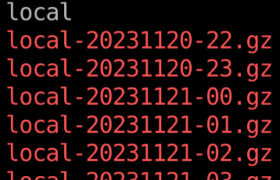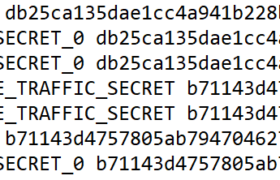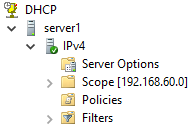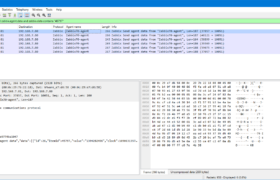Logrotate runs daily by default on Debian Linux. It is scheduled to run at 00:00:00 with systemd: markku@logtest:~$ systemctl list-timers NEXT LEFT LAST PASSED UNIT ACTIVATES Mon 2023-11-20 00:00:00 EET 2h 20min left Sun 2023-11-19 00:00:17 EET 21h ago logrotate.timer logrotate.service … When you want logrotate to rotate files hourly, you need two changes: For […]
Introduction to DHCPv6
Dynamic Host Configuration Protocol for IPv6 (DHCPv6) is just that: a protocol that can be used for host configuration, defined in RFC 8415. In this post I will introduce some basics of the protocol. DHCPv6 protocol A DHCPv6 message for client-server conversation consists of message type (1 byte), transaction ID (3 bytes) and variable number […]
DHCP Server Eventually Responding
In my earlier posts I have shown the Microsoft Windows DHCP server failover configuration behavior where the servers independently decide who will answer to which DHCP clients, using a hashing algorithm based on client hardware address field (usually containing MAC address) in the DHCP packets. In this post I will show how the failover system […]
Decrypting Zabbix TLS with Wireshark
One of the built-in security features in Zabbix is TLS (Transport Layer Security) support for external connections. This means that when your distributed Zabbix proxies or Zabbix agents connect to the Zabbix server (or vice versa), TLS can be used to encrypt all the connections. When the connections are encrypted, third parties cannot read the […]
About Windows DHCP Server Lease Expirations
In a network I was faced with exceptionally large number of IP address DHCP leases for short-time usage. Even though the lease duration was set as relatively short, the DHCP server still occasionally complained about the DHCP scope being full, being unable to assign an IP address to a client. Let’s demonstrate the situation with […]
Network Interface Name Sorting in Python
Evergreen problem in sorting strings: How do you implement human-expected ordering when the strings have varying-length numbers in them? Prime example in the networking world is network interface naming in various devices. Example: >>> interfaces = [“1/1/1”, “1/1/2”, “1/1/10”, “1/1/11”, “1/1/10.32”, “1/1/10.311”, “1/1/10.312”, “eth-1/1/1.1”, “eth-1/1/1.2”, “eth-1/1/1.10”]>>> print(“\n”.join(sorted(interfaces)))1/1/11/1/101/1/10.3111/1/10.3121/1/10.321/1/111/1/2eth-1/1/1.1eth-1/1/1.10eth-1/1/1.2>>> That’s not ideal as the default string sorting […]
Troubleshooting Zabbix Agent with Wireshark
A user has a Zabbix agent that collects the used disk space information on a host. The item interval is one minute: However, the user complains that Zabbix fails to collect to data appropriately as the graph has empty areas with occasional dots: In Zabbix implementations with very high NVPS (new values per second) this […]
Change History for Zabbix Protocols
All the information on this page is gathered from the official Zabbix documentation about the protocols and the upgrade notes. I’m using this information to assist with the Zabbix protocol dissector development in Wireshark, thus not all possible protocol change details will be documented here but mostly only those that affect the dissector. Version history: […]
Lease Time One Hour with Windows DHCP Servers
Interesting question: Why does Windows DHCP server first assign me a lease for only one hour, and after that extend it to one day (or whatever was actually configured in the DHCP scope)? First, let’s see that it really happens as described. Replicating the setup from my previous DHCP posts, I have here two VLANs: […]
DHCP Relay, Part 3: Two Relays, Two Servers
This is part three of the DHCP relay mini-series: In this setup we still have two DHCP servers in load balancing configuration, but we also have two routers in the DHCP client subnet acting as DHCP relays. The routers are running HSRP (Hot Standby Routing Protocol) for first-hop routing redundancy, but it’s really not relevant […]







